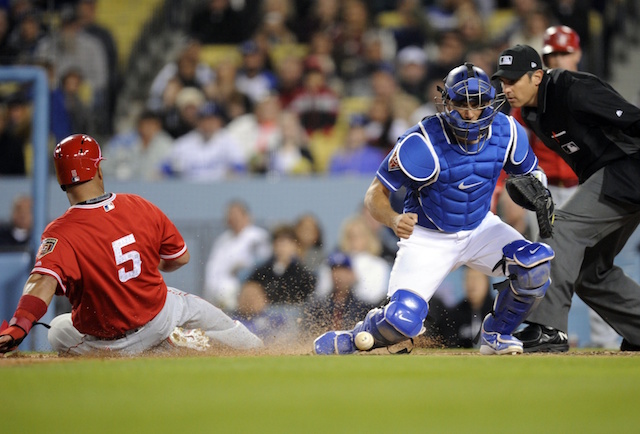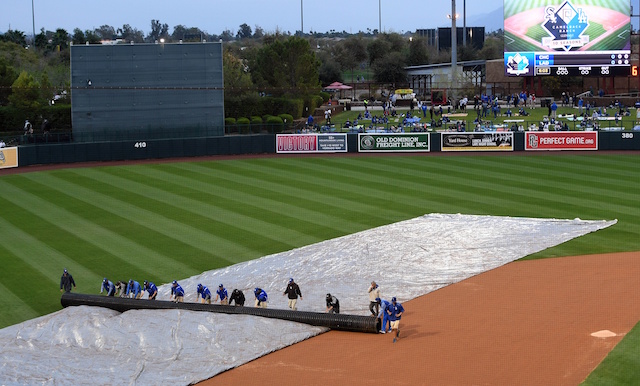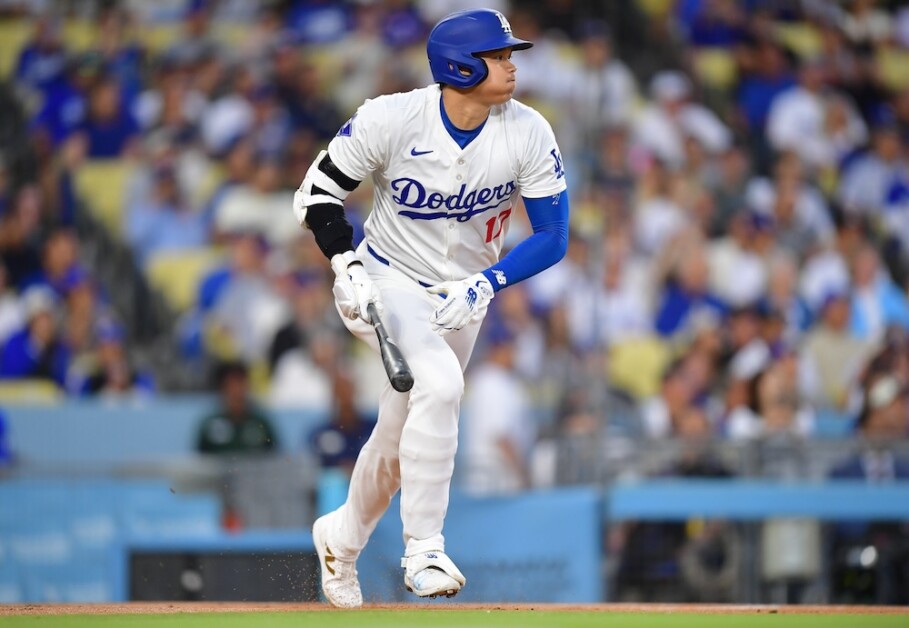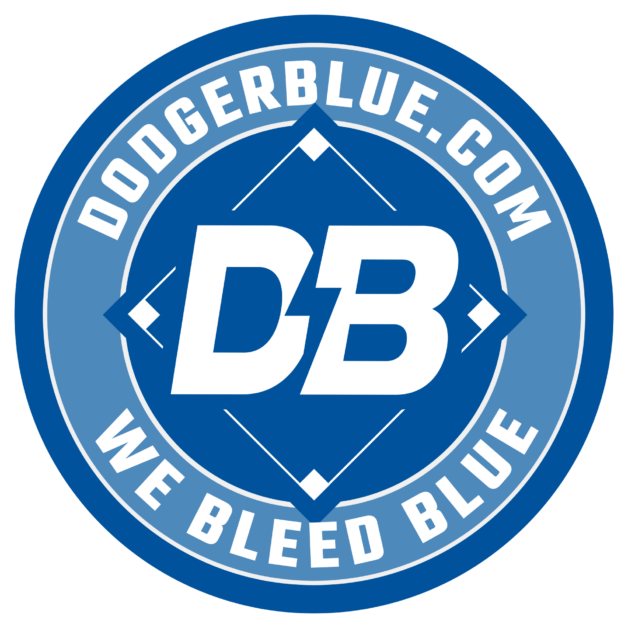The new one-and-only July 31 trade deadline has come and gone, and the Los Angeles Dodgers had by far their quietest period under Andrew Friedman’s regime as president of baseball operations.
They made just two deals on deadline day and completed five overall trades in July.
Trades
The Dodgers made their first July move on the third day of the month, when they acquired Casey Sadler from the Tampa Bay Rays in exchange for Nathan Witt.
Witt was selected in 17th round in 2017 as a draft-eligible sophomore, but has had trouble staying healthy since then. While his velocity is plus, he’s a 23-year-old relief-only prospect still in A-ball.
The Rays have a strong history with developing bullpen arms though, so while you never know, it’s tough to see this one coming back to hurt the Dodgers too badly. Moreover, Sadler may be a little bit underappreciated.
Casey Sadler is super interesting:
-87th percentile FB spin
-93rd percentile CB spin
-23rd most CUT spin in baseball (out of 158 pitchers, four above Kenley)— Future Dodgers (@FutureDodgers) July 31, 2019
Tyler White, who was designated for assignment by the Houston Astros, was the next move, and the Dodgers traded another relief prospect in Andre Scrubb to acquire him.
Scrubb, taken in the eighth round of the Dodgers’ vaunted 2016 Draft class, has taken a step forward in recent years. He’s a very large 6’4, 265 pounds, and he’s known for the vertical movement on his fastball.
While Scrubb was one of the more solid mid-tier reliever prospects in the organization, he was Rule 5 Draft eligible this offseason, and with a potential 40-man roster crunch impending this year, the Dodgers might not have had the space to add him. Scrubb was ranked 74th on my midseason rankings update.
Following that, a couple days before the deadline, the Dodgers added utility man Kristopher Negrón in exchange for Minor League shortstop Daniel Castro. Negrón was likely only added as depth due to injuries to Kiké Hernandez and Chris Taylor.
It was reasonable to suspect he may not have a roster spot or even a 40-man spot once those two return, but Negrón has fared well in his brief time with the Dodgers.
It is fair to wonder why Drew Jackson (who was left unprotected in last year’s Rule 5 Draft, selected by the Philadelphia Phillies and traded to the Baltimore Orioles, but later returned to the Dodgers) wasn’t given a shot.
Though, his sub-.700 on-base plus slugging percentage in the juiced up Pacific Coast League does leave some cause for concern. Furthermore, Jackson’s lack of protection last year does raise questions about how much the organization values him.
Castro and Negrón are both Quad-A players, but with the latter being the better and more versatile of the two, it’s really hard to be actually, legitimately mad at a trade like this.
Now, to deadline day. The first of the Dodgers’ two deals saw them acquire lefty reliever Adam Kolarek for outfield prospect Niko Hulsizer. Kolarek is not a marquee name, but he does get lefties out, the main area the Dodgers were looking to shore up at the deadline:
Lefties against Kolarek this year: 187/.238/.293. He’s an LHP. Biggest #Dodgers bullpen weakness addressed, though obviously not the big name. @DodgerBlue1958 https://t.co/ympag0x2J3
— Austin Green (@AustinGreen44) July 31, 2019
And, as you may have guessed, he has some fun StatCast numbers to back it up.
Numbers aren’t quite at that level this year, but Kolarek had 92nd percentile sinker drop and 97th percentile changeup break in 2018.
That’s a good combination for pitch tunneling purposes
— 🔎 (@eccentricladdie) August 1, 2019
Hulsizer has made big waves this year with his power, hitting 15 homers with a .969 OPS in 58 games in the pitcher friendly Midwest League, before being promoted to High-A Rancho in late June . Hulsizer has a corner OF profile, and while the strikeouts were high for a guy his age, his power and walk rate made them more manageable, and could continue going forward.
Hulsizer’s profile is a little different than another power and strikeouts guy like DJ Peters though, and has a lot more of a fourth/fifth outfielder vibe than Peters does. The Dodgers sold high on another breakout power hitter last year, trading Rylan Bannon to the Orioles as part of the Manny Machado deal, so Hulsizer being moved isn’t super surprising.
Hulsizer was ranked as my 32nd prospect in a recent midseason rankings update.
The second of the Dodgers’ two deadline moves nabbed them Jedd Gyorko and international bonus space in exchange for Tony Cingrani and pitching prospect Jeffry Abreu. Cingrani is out for the year and is a free agent at the end of it, so his loss means little.
Abreu is 19 years old and a 6’4 righty, who currently in his first season stateside in the Arizona League. Eric Longenhagen of FanGraphs reports he’s not very physically projectable, and has below average velocity at 89-92. Abreu, like Witt above, was not on the midseason update of my top 101 organizational prospect rankings.
There’s been much talk in the media world about why the Dodgers made this deal, and whether or not they chose Gyorko over someone like Felipe Vasquez, so let’s put this to rest now: the Gyorko trade and a transaction for anyone else are not mutually exclusive.
The Dodgers added Gyorko as a measure to ensure they have Major League level talent, should the recoveries of Hernandez and Taylor take longer than expected. Gyorko can play everywhere in the infield except shortstop, and absolutely mashes lefties.
He has a $13 million club option at the end of this season, which the Dodgers will almost certainly decline, but he could be brought back on a more team-friendly deal. Additionally, he’s currently on the 60-day IL, so he doesn’t need a 40-man spot just yet.
Add in the unknown amount of international pool money (they can be traded in increments of $250,000), and the Dodgers came away with a potentially solid bench option for the postseason at a very low cost. This is the type of trade usually seen in August, but due to the single deadline, was made in July.
Takeaways
It’s fair to say the Dodgers should’ve done more at the deadline. From what Friedman has said in interviews, the Dodgers were as focused, if not more so, on being aggressive and adding a big name talent at the deadline as they were in previous years.
During a recent interview on SportsNet LA, Friedman explained the team was mostly focused on “four or five guys,” and it’s not like they chose not to beat another offer; those players just didn’t get traded. Looking at you, Pittsburgh Pirates.
The case Friedman makes is that with this current team, marginal relief options just weren’t worth paying for in this market, and the front office was focusing on bigger talents who would’ve actually made an impact.
Make no mistake, more relievers are never a bad thing, and the Dodgers had the prospect capital to acquire the likes of Jake Diekman or Hunter Strickland, both of whom went for pretty cheap prices compared to the market.
But, there’s very little correlation between reliever’s performance before and after being traded. Knowing this, the Dodgers front office displayed a lot of confidence in their internal options by only adding one reliever, a confidence that will surely be tested in October.
One could argue the Dodgers already have eight of their postseason pitching spots locked up, barring injury: Clayton Kershaw, Walker Buehler, Hyun-Jin Ryu, Kenley Jansen, Joe Kelly, Pedro Baez, Julio Urias and Kenta Maeda.
That leaves four spots remaining, with one starter and three relievers left to grab, assuming Urias and Maeda don’t start (which they could).
For a starter, if Rich Hill can prove he’s healthy, he’s probably the best bet, but Dustin May could pitch his way onto the team, and Ross Stripling is still valued for his versatility. Though, Stripling is still dealing with neck trouble.
The Dodgers will need another lefty in the bullpen, which gives the newly-acquired Kolarek a good bet to make the roster. Particularly with Scott Alexander still being injured and Caleb Ferguson’s sophomore season being much less impressive than his rookie one.
Chris Nunn, a fireballing lefty at Triple-A who’s touched triple digits, could be an option as well, but isn’t currently on the 40-man roster. The same goes for fellow lefty Victor Gonzalez, a once top-30 prospect in the system, who reached Advanced Rookie Ogden at age 18, and Low-A Great Lakes at 19.
Gonzalez, now 23, missed all of 2017 with a shoulder injury, and the team transitioned him to relief midway through 2019. In six appearances over 4.1 innings in his first stint in Triple-A, he’s struck out eight, while allowing just two hits and two walks.
Gonzalez has reportedly sat at 94-96 mph, and his breaking ball and changeup have looked good since his promotion, and his delivery features a little deception as well.
Recently signed righty Tyler Thornburg is also not on the 40 man, and definitely fits the profile of a relief pitcher Friedman would target.
A Friedman guy if I’ve ever seen one pic.twitter.com/IaoSPoWwaL
— Future Dodgers (@FutureDodgers) July 11, 2019
The team also has relievers JT Chargois, Sadler, Yimi Garcia, Dylan Floro and Josh Sborz as options, and after his impressive recent appearance at Coors, Tony Gonsolin could force his way in as a relief option as well.
While some are far more realistic than others, the Dodgers could do much worse than picking four of those 15 pitchers to add to the eight they already have. And no matter who gets selected, the higher leverage innings are really already reserved for Jansen, Kelly, Baez, and Urias (if he relieves).
Additionally, after seeing the success of Houston and Boston in back-to-back years in using some of their starters as relievers during the playoffs, the Dodgers could look to be more aggressive with their pitchers and utilize that approach as well.
Concluding Thoughts
The Dodgers did not have the trade deadline many expected them to. After being linked to Vasquez, Edwin Diaz, Noah Syndergaard and Will Smith in the weeks and even months preceding the deadline, they acquired none of them, nor anyone in a similar talent tier.
They held onto their prized prospects, even the non-top ones who could’ve maybe been expendable. However, this front office has shown a keen eye in keeping certain prospects over others, and their record should grant them some leeway from fans here.
They resisted public and media pressure to trade prospects Corey Seager and Urias for Cole Hamels in 2015, Buehler or Alex Verdugo for Yu Darvish in 2017, and Gavin Lux and May for Manny Machado in 2018, and so far, those decisions have been vindicated.
If the front office determined that certain relievers weren’t worth Keibert Ruiz, Josiah Gray, DJ Peters, or others, they’ve earned the benefit of the doubt.
The braintrust has made the conscious, intentional decision to rely on their internal options in October, and time will tell if that’s the right move. Ultimately, improving the bullpen might not even matter regardless, as the Dodgers could still have an offensive slump or a couple bad starts from one of their three aces end their season, with bullpen performance not even factoring in.
There’s a lot of randomness that happens when you shrink baseball from 162-game sample sizes down to five or seven games, and the best team doesn’t always win in the postseason. That all said, this Dodgers team entered July 31 as the presumptive National League favorites, and the exited the deadline the same way.
If this team performs at the level it’s capable of, it’s a championship team, without a doubt. With the division basically locked up in early August, the Dodgers will have some time to figure out who does and doesn’t belong on the October roster.










